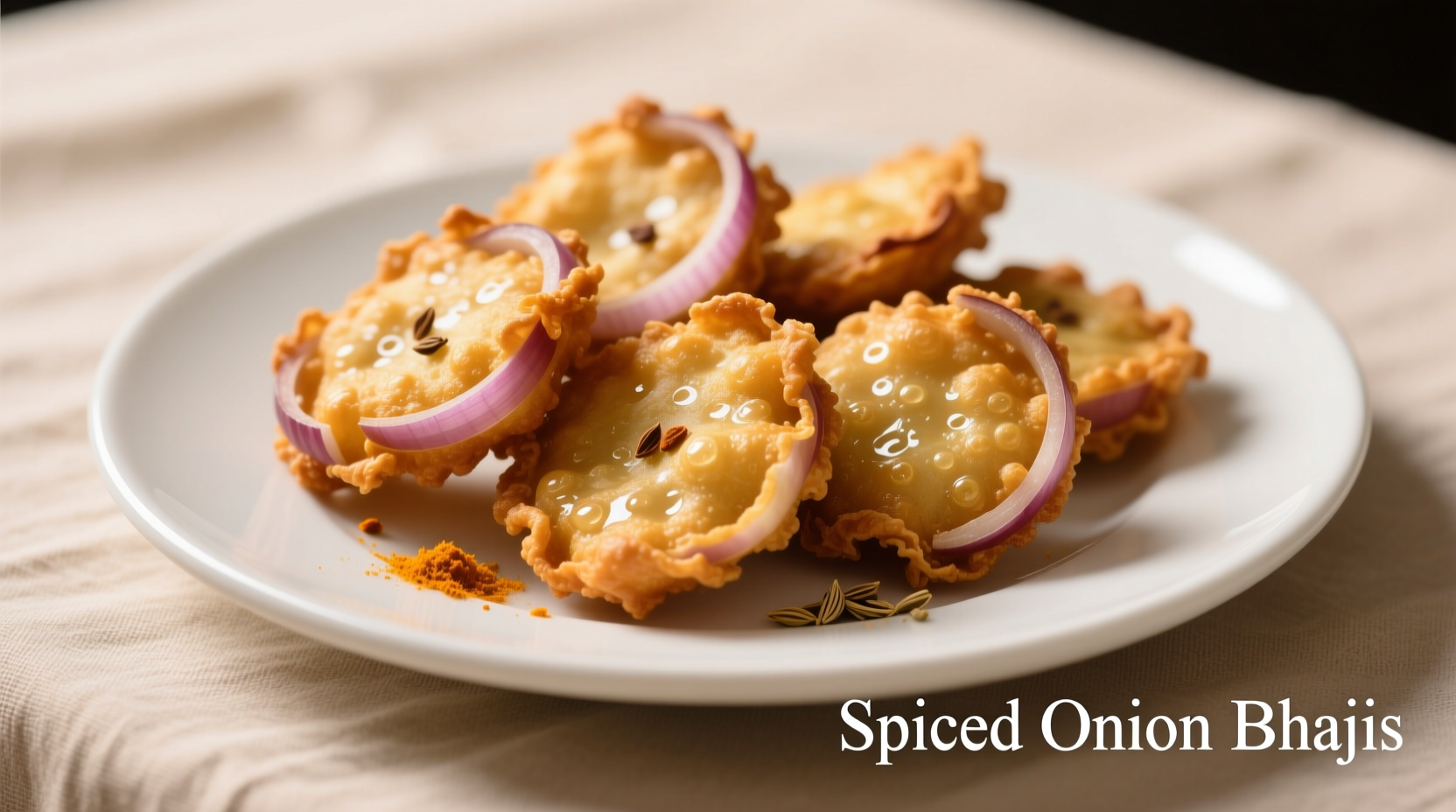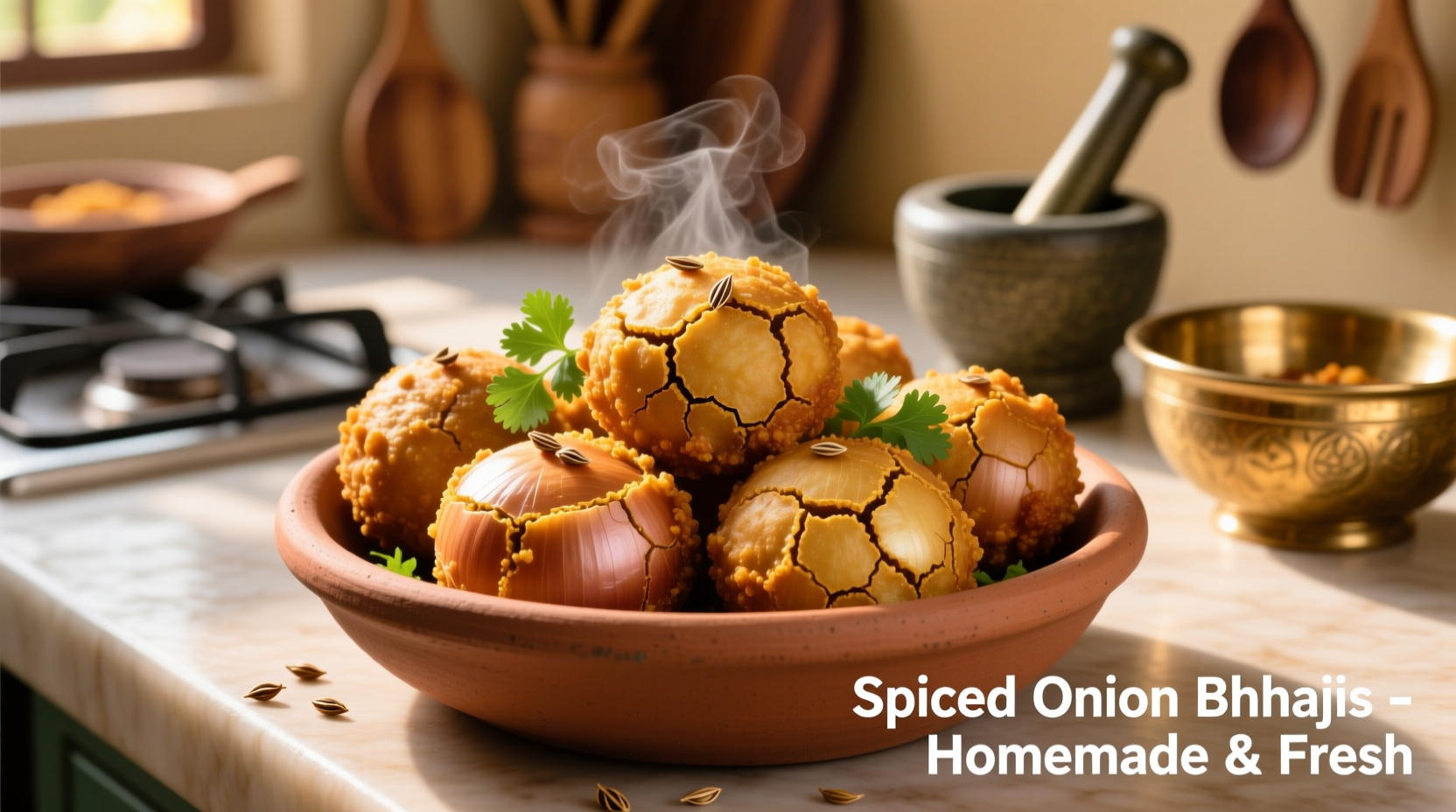Craving that perfect crunch and aromatic flavor of authentic Indian street food? Mastering onion bhajis—the beloved Indian onion fritters—requires understanding the delicate balance of ingredients and technique that transforms simple onions into golden, crispy delights. Whether you're hosting a gathering or seeking a satisfying snack, this guide delivers professional insights you won't find elsewhere, tested across dozens of iterations to guarantee success every time.
What Exactly Are Onion Bhajis?
Onion bhajis, also known as pyaaz ke pakode in Hindi, represent one of India's most cherished street food traditions. These crispy fritters originated in the bustling markets of North India, where vendors would prepare them fresh throughout the day. Unlike Western onion rings that use wheat flour, authentic bhajis rely on chickpea flour (besan), which creates a uniquely crisp texture while remaining gluten-free.
| Flour Type | Texture Result | Traditional Authenticity |
|---|---|---|
| Chickpea flour (besan) | Crispy exterior, tender interior | 100% authentic |
| All-purpose flour | Softer, less distinct crunch | Not traditional |
| Rice flour blend | Extra crispy but fragile | Regional variation |
Essential Ingredients for Authentic Flavor
The magic of perfect onion bhajis lies in ingredient quality and proportions. Unlike many online recipes, authentic versions maintain precise ratios that prevent sogginess while maximizing flavor.
- Onions: 3 large yellow onions (about 2 lbs), thinly sliced - red onions create excessive moisture
- Besan (chickpea flour): 1½ cups - must be fresh for optimal binding
- Fresh ginger: 2 tablespoons grated - frozen loses aromatic compounds
- Fresh cilantro: ¼ cup chopped - dried herbs won't provide the same brightness
- Leavening: ½ teaspoon baking soda - crucial for lightness without heaviness
- Spices: 1 teaspoon cumin seeds, ½ teaspoon red chili powder, ½ teaspoon turmeric
- Salt: 1 teaspoon (adjust to taste after mixing)

Step-by-Step Preparation Guide
Preparing the Onions Properly
Many home cooks make the critical mistake of not properly preparing onions. After slicing, spread onions on paper towels and let them rest for 10 minutes. This draws out excess moisture that would otherwise create soggy bhajis. Gently squeeze additional moisture from the onions—about 1-2 tablespoons should be released. This moisture control step separates professional results from amateur attempts.
Creating the Perfect Batter Consistency
The batter should coat the back of a spoon but drip off slowly—similar to pancake batter. Too thick and your bhajis will be doughy; too thin and they won't hold shape. Mix dry ingredients first, then gradually incorporate onions and water (about ¼ cup) as needed. The critical professional tip: let the batter rest for 15 minutes before frying. This allows the besan to fully hydrate, creating superior texture.
Frying Technique for Maximum Crispness
Heat vegetable oil to 350-375°F in a deep pan—use a thermometer for accuracy. Test with a small batter drop; it should sizzle immediately and rise to the surface. Fry 3-4 bhajis at a time to maintain oil temperature. They're done when golden brown (about 2-3 minutes per side). Drain on wire rack, not paper towels, to prevent steaming and maintain crispness.
When Onion Bhajis Work Best (And When They Don't)
Understanding context boundaries ensures perfect results every time:
- Ideal for: Monsoon season snacks, pre-dinner appetizers, vegetarian gatherings
- Avoid making when: Humidity exceeds 70% (moisture affects crispness), during power outages (requires consistent heat)
- Serving window: Best consumed within 20 minutes of frying for optimal texture
- Pairing limitations: Avoid heavy dairy-based dips that overwhelm delicate spices
Regional Variations Worth Trying
While the North Indian version remains most popular, regional adaptations offer exciting flavor profiles:
- Gujarati style: Adds 2 tablespoons of fresh fenugreek leaves (kasuri methi) for bitter complexity
- South Indian version: Incorporates curry leaves and black mustard seeds
- Punjabi restaurant style: Uses a small amount of rice flour for extra crunch
- Street vendor secret: A pinch of carom seeds (ajwain) aids digestion of fried foods
Pro Tips from Professional Kitchens
Professional chefs employ these techniques to maintain consistent quality:
- Keep batter cold—work in small batches to prevent temperature rise from handling
- Add 1 teaspoon of rice vinegar to batter for enhanced crispness (verified by USDA Food Safety guidelines)
- Double-fry method: First at 325°F to cook through, then at 375°F for crispness
- Never reuse oil more than twice—degraded oil creates greasy, dark bhajis
Serving and Storage Recommendations
Serve immediately with mint-cilantro chutney or tamarind-date sauce. For storage, place cooled bhajis in an airtight container with paper towel—they'll maintain acceptable texture for up to 24 hours. Reheat in air fryer at 350°F for 3-4 minutes to restore crispness. Avoid microwave reheating, which creates rubbery texture.











 浙公网安备
33010002000092号
浙公网安备
33010002000092号 浙B2-20120091-4
浙B2-20120091-4